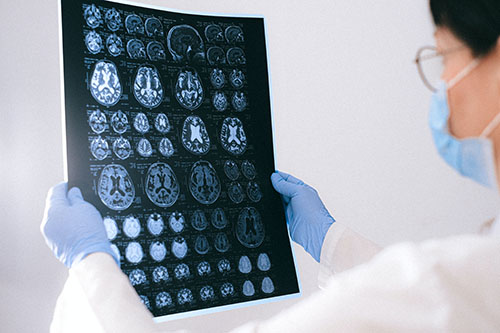Stenosis of the transverse sinus, especially bilateral (or unilateral if the other transverse sinus is underdeveloped) is associated with IIH. MR VenographySimilar to an MRI – pictures are taken of the brain using magnets and radiofrequency. During the MRV though, additional pictures are taken to look… Click the term to read more (MRV) is the best non-invasive examination to diagnose transverse sinus stenosisNarrowing of the transverse sinus of the brain. It is a likely source of intracranial hypertension seen in patients with IIH. Click the term to read more. MRV is a good examination to get if IIH is suspected, because transverse sinus stenosis is almost always present in IIH, while it is rare in patients without IIH. Furthermore, other signs of IIH can be found on MR imaging and help diagnose IIH, all non-invasively.
Some articles on this subject include:
IdiopathicThe term idiopathic is used when there is no detectable reason for something. Click the term to read more intracranial hypertension. The prevalence and morphology of sinovenous stenosis, by Farb et al. 2003.
The authors performed a contrast MRV in a controlled prospective study in 29 patients with IIH and 59 without. They found that bilateral stenosis of both (bilateral) transverse sinuses existed in 27/29 patients with IIH and only 4/59 patients without IIH. They concluded that MRV is very good (high sensitivity and specificity) at identifying IIH patients. The summary is available for free: 10.1212/01.wnl.0000066683.34093.e2
Does bilateral transverse cerebral venous stenosis exist in patients without increased intracranial pressure? By LP Kelly et al. 2013.
The authors reviewed the MRV (performed with injection of contrast) of 240 patients. 44 had transverse sinus stenosis. Out of these 44, 7 did not fit the IIH criteria. Out of these 7, 6 had one or several radiological criteria suggestive of IIH and 5 who had a lumbar punctureA procedure where a needle is placed in the lower part of the spine (the lumbar spine) to access cerebrospinal fluid. Click the term to read more performed has a pressure at the upper limit of normal. Only one patient had no other radiological or clinical symptoms suggestive of IIH. The authors concluded that bilateral transverse sinus stenosis is rare in patients without IIH. The discussion is interesting and the references are pinpoint. The entire article is available online: 10.1016/j.clineuro.2012.11.004



